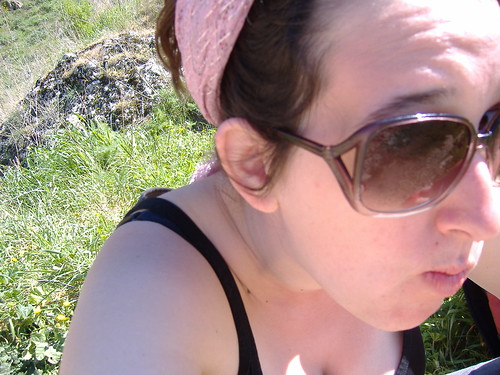I am thinking back to late January and trying to recall what I expected this class would be like. For some reason, four months feels like a year ago.
That may sound like hyperbole, but I believe its rather relevant to a lot of what we discussed in class, although perhaps only tangentially. The sheer mass of information, images, ideas, and opportunities for interaction with media is so substantial that each day feels like a week. If I have a moment to reflect on where my day’s interaction with media began, where it ended, and how I got there in between, I am often awestruck by the transitions.
More than anything, this class forced me into that state of reflection. Instead of taking the distanced-critic approach to media, it required me to engage with and interact in ways I am often incredibly resistant to. I can locate reasons for some of the resistance: the interconnected threads of social networking and the span of my digital footprint, an aversion to publishing anything without overanalyzing what it says and who could find it. But other aspects were more surprising. For example, I hated posting vapid comments for the sake of simply posting them. I thought a lot about whether submitting a comment actually counted as an interaction. Are there hierarchies of engagement? Is the back-and-forth approach to commenting or “fisking” actually all that different from the one-way communication journalism has historically operated in?
The simple answer is, of course, yes and no. Of course there are more opportunities to publish one’s own opinions or feedback with the Internet than there were when letters editors made the decisions. But publication and promotion are different. Some of our blogs were heavily trafficked, while others saw very little. And the process of promotion is still connected to the purse strings – whether that money is spent in resources like how much time one has to plug their work or the old-fashioned route of advertising. Simply replying to a news article and leaving a comment opens up some opportunities for engagement, but they are limited. It starts to get interesting when journalistic institutions turn over their publication spaces willingly, provide resources for newsgathering, and engage with their readership/audience in ways that break down the barrier separating them in the first place.
I spent a lot of time in this course challenging the definition of journalism itself (and it is worth repeating again that this is not a dispute over the definition of a journalist – as I believe anyone can do the work of journalism). Though I don’t think journalism has to be published on certain platforms or written by people with specific experience or degrees, I do think at its core it is about providing information and ensuring a check and balance on the powerful (be they institutions of government or of business). Storytelling itself plays an important role in how we understand the world around us, as well as opening up new avenues for providing insights not typically afforded space in newspapers or other traditional news outlets. I think I have to concede in my own definition of journalism to at least include a broader swath of approaches, such as the literary journalism of David Foster Wallace.
But I maintain my position that reviews and criticism are not journalism. They play an invaluable role in how we understand the world around us, and I love reading record reviews as much as the next gal (probably more), but its an important line to maintain.
The other most valuable aspect of the course was the chance to hear how young journalism majors approach these concepts and tools. I admit to being surprised by how liberally they applied the definition of journalism, how few people were willing to answer our guest speaker when she asked for a list of the freedoms outlined in the First Amendment, and to the sheer quantity of folks who seem interested in sports or feature writing. Where are we going to find our local beat reporters or government watchdogs if so few journalism students are interested in doing that work?
In the end I valued how much time was spent experimenting with the new media tools of Web 2.0. Knowledge about what these things are and how they can be used to engage with readers, locate sources, and compose sources are great resources for aspiring journalists. It was interesting how few of the students really knew anything about blogging, online publishing conventions, or networks like Twitter. My boyfriend suspects that growing up under eight years of the Bush administration created a fearful generation of Internet users. Maybe he is right.
All in all the class was certainly educational – though perhaps not for the coursework itself. But it provoked me to think, challenge some of my own assumptions, harass my friends and family into discussions about journalism and democracy, and even forced me to write some blog posts. What more could I ask for in my final class as an undergraduate?
Wednesday, May 6, 2009
Subscribe to:
Post Comments (Atom)

No comments:
Post a Comment